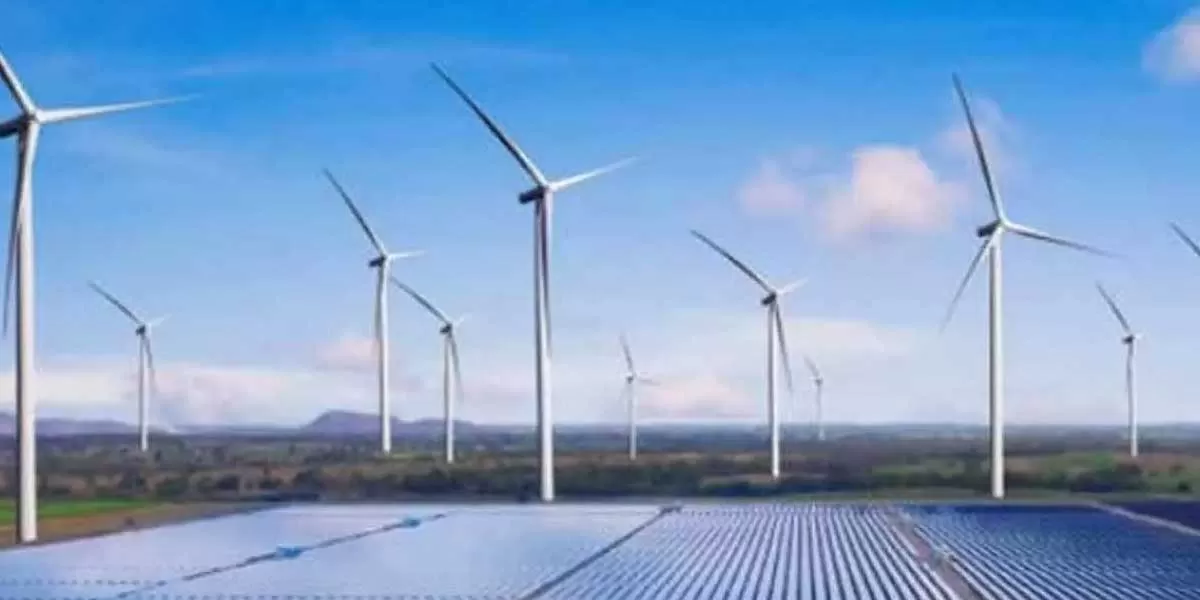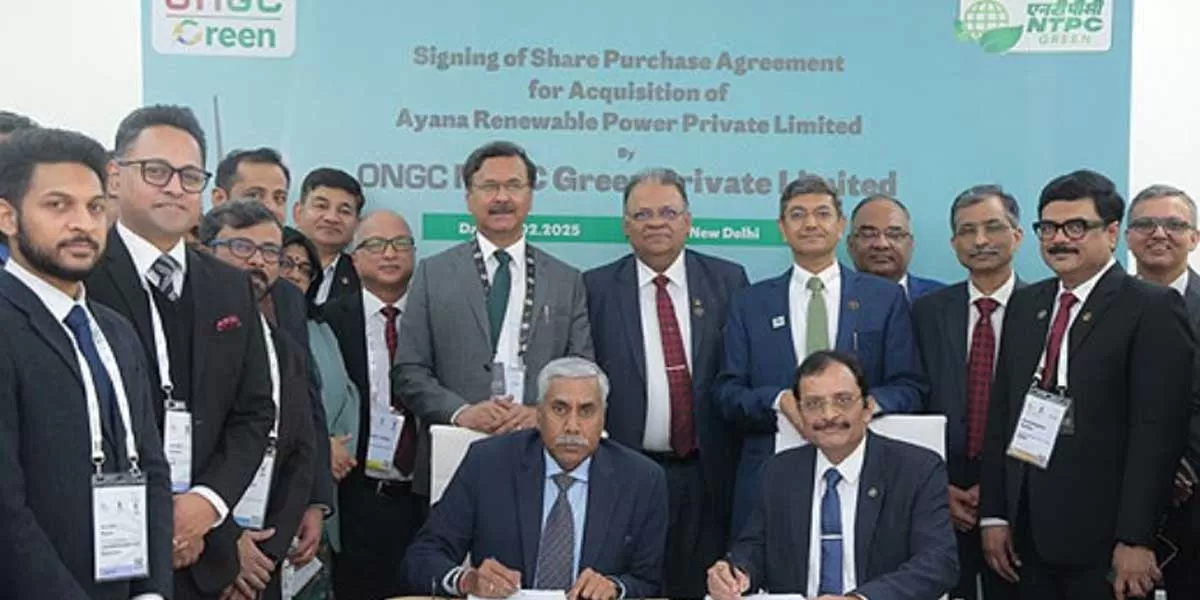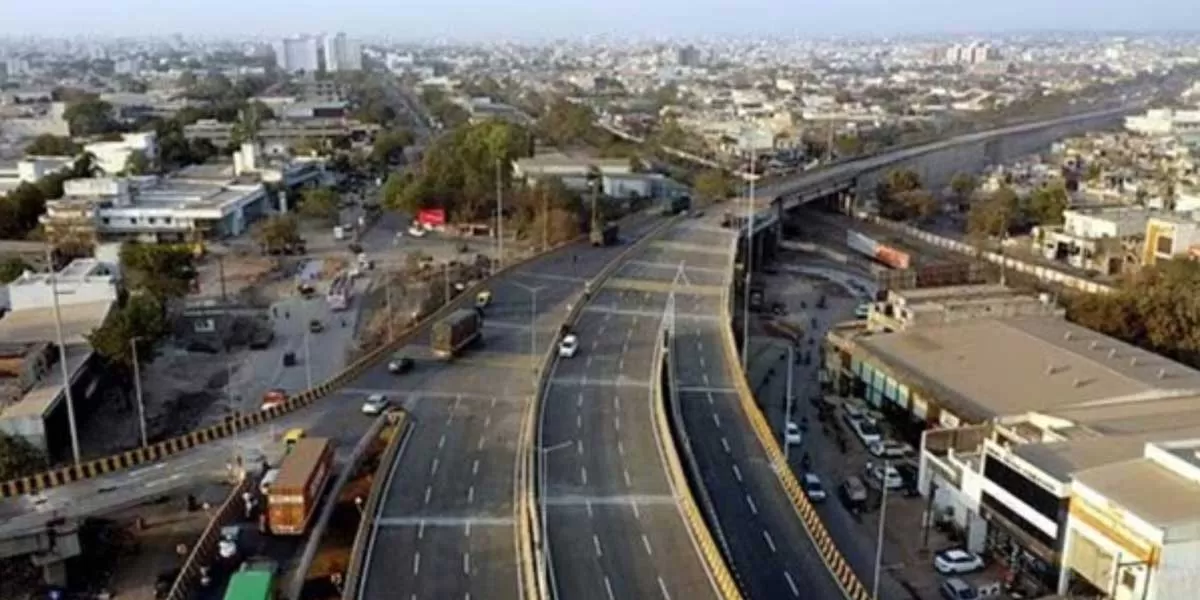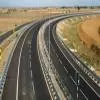With 150 tall buildings coming up in India, construction technologies that help bring down costs and time are the need of the hour – and jump-form appears to be taking the lead, as CW PROPERTY TODAY discovers.Globally, 143 buildings of 200 m height or greater were completed in 2018. A slight decrease from 2017’s record breaking 147, this brings the total number of tall buildings in the world to 1,478 – an increase of 141 per cent from 2010 and 464 per cent from 2000, when only 262 existed. Asia continued to dominate skyscraper construction with China leading the pack. And India is getting on board with many tall buildings under construction or on the drawing board (see box titled ‘150 tall buildings expected in India’).Time to build tallThe development time per slab may vary depending on the footprint of the project, the type of system formwork adopted, and other factors.“Generally, the core takes five to seven days and the slab around 8 to 10 days,” says P Ramakrishnan, COO, Lodha Group. The above timeframe is with 70 per cent mechanisation; if increased to 90 per cent plus, one can reduce a couple of days each in the core and slab. Ramakrishnan adds that for speed, the group tries to improve logistics in construction.According to Sandip Shah, HOD, Supply Chain Management, Omkar Realtors, the average slab cycle for development is about 7-10 days for an area of about 20 lakh sq ft (whole project) with a slab size of 10,000-12,000 sq ft; the core-shell cost of development would be about Rs 1,500-1,700 per sq ft.Ideally, with an aluminium formwork system, the average slab cycle time may vary from seven to eight days, says John Guest, President-Construction, Piramal Realty. “With a jump-form system, it is five to six days.”On the other hand, using conventional methods, “it normally takes 13-15 days for developing a slab,” says Pratik Mantri, Director, Mantri Developers.While Capacit’e Infraprojects has consistently maintained seven days per slab, “in some cases, we have also achieved a sustainable slab cycle of five days for the entire floor,” shares Tushar Srivastava, President & Corporate Head-Business Development & Marketing.Cutting down on cycle timeReducing the floor cycle time is an important parameter as it is a critical activity for over 90 per cent of the construction period for a typical tall building. “This can only be achieved by ensuring that we engineers are involved right from the concept stage,” says Anil Hira, Vice Chair, Council on Tall Buildings and Urban Habitat (CTBUH), and Director and Partner, Asia India and Middle East, BuroHappold Engineering.Specially designed system formwork, use of high-grade materials, post-tensioning, climbing formwork, early de-shuttering techniques, use of less materials, offsite fabrication and erection of assembled parts are all ways to achieve shorter slab cycle and lesser cost, highlights Girish Dravid, Chair, CTBUH, and Managing Director, Sterling Engineering Consultancy Services. “Architectural and structural designs must be conducive to implement fast-track technology.”Piramal Realty uses high-capacity tower cranes with higher lifting speed to ensure shifting of materials at greater heights in lesser time and high-speed passenger hoists to ensure quick vertical movement of workers. “We also plan to use customised modular panels for slab formwork along with hydraulic safety screens to ensure faster and safer operations even at higher altitudes,” says Guest. “Further, prefab reinforcement cages for beams and precast staircases can help reduce time and cost substantially.”Utilising upgraded technologies has resulted in the reduction of casting duration by about 80 per cent for Mantri Developers. “With technologies like tunnel-form, we can now cast a slab within two to three days,” says Mantri. In cases where tunnel-form is not viable, the company deploys Mivan shuttering, which enables the reuse of shutters, resulting in cost and time reduction.For its Mahalaxmi Dhobighat project in Mumbai, Omkar Realtors has undertaken backward and forward integration for procurement process innovation by means of manufacturing weld mesh at site, which has helped reduce inventories of high value items like steel. “Also, with the help of a captive concrete batching plant, we have ensured timely deliveries in a quality manner. All this helped the project to reduce the slab cycle time from four to five days to two to three days,” says Shah. In fact, precast is even faster, enabling a floor cycle of 11 days including finishing. Omkar has constructed some buildings at its Pragati Towers project, Bhoiwada, in Mumbai, with shear wall structural design and precast, for which it adopted 3D elements like POD for the WC and bathroom.Investing in the latest construction technologies definitely helps bring down costs and timelines. For instance, Capacit’e Infraprojects’ 5.86-lakh-sq-ft Pt. Madan Mohan Malaviya Cancer Hospital in Varanasi was constructed (including all finishes) in a record 10 months on a turnkey model. “This was possible because we adopted the composite construction methodology for the structure, with the core in RCC and structural framework in steel,” reveals Srivastava. Besides, Capacit’e work sites are ERP-enabled, which has helped bring down material procurement timelines. “It ensures efficiency in processes and better controls.”Designing rightGenerally, the structural engineer is appointed at the design stage of a project. However, Dravid points out, “At this stage, most of the architectural planning is already finalised based on the FSI achievement, plot dimensions and buyers’ market guidelines. As a result, the engineer can offer optimisation and design skills only partially. If developers and buyers understand that high-rise building design is a different science altogether, and if the structural designer is consulted right from the conceptual stage, significant savings and safety can be brought about in the building design.” A structural engineer has to look at the strength, stability, durability and performance of the building against static and dynamic loads. Most important here are wind and earthquake forces. Indeed, occupant safety and comfort are priorities in designing tall buildings.“We recognise that for tall building design, early engineering involvement, particularly in structural engineering, vertical transportation (VT) and geotechnical engineering, will lead to optimal solutions,” agrees Hira. “An efficient, lateral load-resisting structural system to suit the building’s architectural planning is essential. This can only be achieved by full collaboration with the architect from day one. Deriving an efficient structural system integrated into the aesthetics and architectural planning is important. In addition, wherever possible, the structural solution should also incorporate VT and MEP requirements – essential for planning of the core – which often plays a prominent structural role to resist lateral loads.” Popular technology picksFast-track technologies such as precast, aluminium form, jump-form, tunnel-form, PEB and drywall are gaining popularity in India. “In the past few years, we have witnessed growing interest in prefab and precast construction techniques,” affirms Manit Rastogi, Founder Partner, Morphogenesis. Formwork has helped Capacit’e Infraprojects construct a 27-lakh-sq-ft commercial project in 12 months. “Here, we are employing monolithic construction methodology, uncommon in the industry,” says Srivastava.Jump-form is taking the lead. While capital-intensive, it is an effective solution for buildings that are repetitive in form or require a seamless wall structure. “The self-climbing core system not only saves time and cost but delivers high-quality surface finishes,” says Guest. “Further, its highly engineered nature allows quick and precise adjustment of form shutters in all planes and provides a high degree of accuracy in the verticality of structures.”Lodha Group deploys jump-formwork for the core and slab in almost all its projects. “We have also used a combination of jump-form for the core and aluminium shuttering for slabs,” adds Ramakrishnan. Despite the technology available, challenges still prevail. Obtaining qualified and trained manpower is an important one; another is logistics planning. Projects on the go!Lodha Group has five buildings underway for delivery, while four are under various stages of construction in the super high-rise category (50 storey and above). “We are using jump-form and aluminium shuttering,” says Ramakrishnan. Scaffolding, hanging platforms, etc, are used for work in façades and painting. Curtain wall, specially designed window systems, are used based on the project category. He shares that sound, dust and waterproofing are the main criteria while designing the building’s envelope.Piramal Realty’s ongoing high-rise projects include Piramal Aranya, Piramal Mahalaxmi, Piramal Revanta and Piramal Vaikunth. “Two of these are using jump-form systems including customised modular panels for slabs,” shares Guest. “The other projects have mid-rise towers, wherein we have adopted aluminium formwork. For all four projects, we are using higher grades of concrete and reinforcement in the structures. To allow the formwork systems to work efficiently, we have ensured a logistics network of high-capacity luffing tower cranes and batching plants along with large concrete pumps and placing booms and high-speed hoists for minimal delay and maximum productivity.”Capacit’e is the contractor for a 275-m super-tall residential tower in Mumbai. “In Mumbai alone, we have been contractors for at least 12 projects where the height is over 150 m,” says Srivastava. “We will commence construction on a few upcoming projects of over 200 m this year.”Omkar Realtors is keen on modular construction for its high-rise buildings. It has upcoming projects of 90 lakh sq ft, for which it requires concrete of about 4-5 lakh cu m and about 50,000 metric tonne of steel. “We are currently using tunnel and aluminum formwork technology, and are looking for new construction techniques to reduce the construction period,” says Shah. “Further, we will require 300-odd elevators in the next two-and-a-half-years for our ongoing projects. We are also looking at procuring 10-12 tower cranes and high-rise pumps in the near future.”Fast-tracking high-rises is clearly no longer a tall order!- SERAPHINA D’SOUZA150 Tall Buildings Expected in IndiaBy definition a ‘tall’ building is one with a minimum height of 200 m. “About 150 tall buildings, with height over 200 m, are currently either under construction or just about to start construction,” confirms Girish Dravid, Chair, Council on Tall Buildings and Urban Habitat (CTBUH), and Managing Director, Sterling Engineering Consultancy Services. “Of these, about 75 are actively under construction and about 25 are going slow or on hold, or completed as a whole or partially, but not occupied. The remaining are approved or proposed and may soon begin construction.”Seismic Analysis is CriticalWind tunnel test and site-specific seismic studies for tall buildings have become a norm.Anil Hira, Vice Chair, CTBUH, and Director and Partner, Asia India and Middle East, BuroHappold Engineering, shares the importance of structural analysis:“Deriving the correct design wind or seismic loadings becomes increasingly important with increasing height. Wind tunnel testing, augmented by design wind speeds given by the code, is currently the only means of deriving reasonably accurate wind loads taking into account the shape of the buildings, the topography and wind climate. Codes can be used as guidelines; however, typically, their application to derive wind loads for tall buildings is limited to rectangular or circular structures. For seismic consideration, where a tower is subject to a complex dynamic load over a short period, complex procedures are in place in our codes and guidelines to derive design loadings that are sensitive to the dynamic characteristics of the structure. While there are several options available, the engineer must fully appreciate the limitations of the methodologies available. Here, analytical software packages are the only tools and the onus is on the engineer to use these tools to derive safe, economical and sustainable structural solutions.”Innovations!Innovations in recent times can be categorised into material use, construction technology and design procedures and processes. “The combination of these is inevitably leading to optimal building solutions with due consideration to the three pillars of sustainability: environmental, social and economic,” says Anil Hira, Vice Chair, CTBUH, and Director and Partner, Asia India and Middle East, BuroHappold Engineering. He shares:In terms of materials, the most significant progress has been in concrete technology, where we now have the ability to develop and supply concrete mixes with strengths four to five times what was possible a century ago. This has obvious benefits for tall buildings that involve high loads. This has made concrete a competitive material with steel. Second, composite construction is becoming increasingly popular. The clever use of a mixture of structural steel and reinforced concrete for major components of high-rise construction leads to lighter buildings and quicker construction. Also, the use of timber – a carbon-neutral material – as a primary material for high-rises is on the rise. With rapid development in timber technology in the area of connections, we can now build high-rises up to 25 stories wholly in timber. Carbon fibre and plastic composites have the potential to be applied to primary elements of high-rise buildings in future to achieve higher strengths while minimising overall weight. Wherever possible, we encourage the use of high-strength concrete to minimise the physical sizing of the primary vertical elements in tall buildings.There has been tremendous progress in construction technology to increase construction speed. Advance formwork systems that employ hydraulic systems (fully computerised) to advance floor by floor, preserving total accuracy and speed with minimal human involvement, are now deployed for many tall building projects in India. To maximise effectiveness, structural engineers must also focus on designing for construction and not just material optimisation. In recent times, another significant trend is the use of pre-engineered and prefabricated elements that minimise on-site labour-intensive activities. Along with increasing speed, they also improve quality and allow greater creative freedom. Such elements can vary from simple 2D structural elements to complex 3D volumetric units comprising the structure, services and full finishing. Pre-manufactured bathroom pods are a good example.The third category is design process involving BIM. It produces an integrated design and monitoring process from the initial conception of a project to the end date of the design life encompassing design, costings and timeframes. At BuroHappold, we have made significant investments in BIM, especially for the design phase, including extensive use of computational and digital engineering linking various disciplines to produce a fully coordinated design. The process also involves the linking of analytical, design and drawing tools seamlessly to allow the investigation of many design options quickly and efficiently.Sustainable SkyscrapersThe design and construction of tall buildings involves creating safe and habitable spaces. “Therefore, it becomes imperative for architects to ensure that new projects foster ‘indoor-outdoor living’ and contribute to the surrounding environment by bringing low-rise living to a vertical format,” says Manit Rastogi, Founder Partner, Morphogenesis. He cites two examples:Mahindra Luminare, Gurugram: With the aim to bring bungalow living to a high-rise format, Morphogenesis takes the indoor-outdoor living experiences offered in traditional houses and transposes the design onto a vertical format with deep, generous verandas. These elevated, wraparound spaces provide rain protection along with shading, tempering the outdoor environment to make it usable for a far greater part of the year. Designed as a cost-control construction measure, each veranda acts as staging for the floor above.Prius Vision Towers, Gurugram: To create a high-rise morphology that addresses the sociocultural need for proximity to open spaces and retains a ‘soul space’ approach, the form of the skyscraper was generated using a computer optimisation programme. The primary design generators were an optimal floor plate size suitable for office usage, an appropriate ratio between the floor plan and the height of the building and, most important, the need for breakout spaces on each floor free of FAR. The position of these terraces spirals through the tower, creating visual dynamics in the built volume. The towers work on a three-floor low-rise office typology that is stacked vertically to achieve a highly sculptural form and a variety of spaces in the form of terraces. Every third office floor plate has a dedicated double-heighted terrace, thus encouraging engagement with the environment. Located in the dry belt of Gurugram, this site faced a peculiar situation of an underground water stream with an up-thrust pressure. We planned an innovative groundwater harvesting strategy from the early stages of construction. The under slab drain system is spread across 25,000 sq m and the net water harvested from the underground sumps amounts to 600 litre per day of raw water supply, providing a sustainable, potable water solution. This project won the GRIHA Exemplary Practice Recognition, Passive Architectural Features India.

















